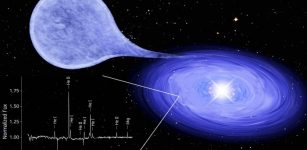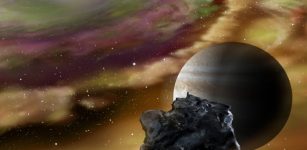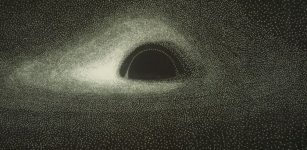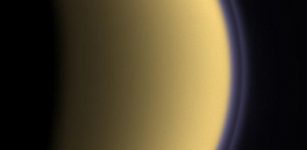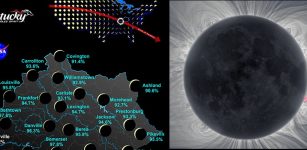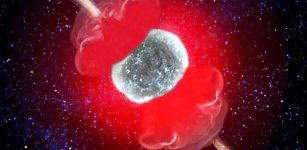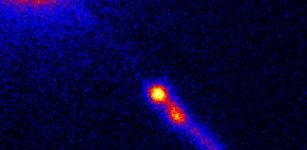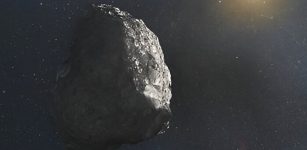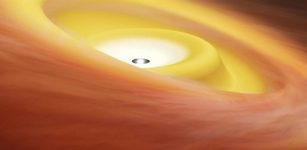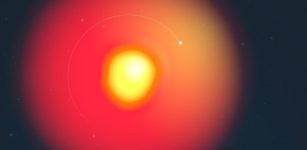Sunburst Arc Doppelgangers – Captured By Hubble Space Telescope
Eddie Gonzales Jr. – MessageToEagle.com – Astronomers using the NASA/ESA Hubble Space Telescope have observed a galaxy in the distant regions of the Universe which appears duplicated at least 12 times on the night sky.
This NASA Hubble Space Telescope photo reveals a cosmic kaleidoscope of a remote galaxy, which has been split into multiple images by an effect called gravitational lensing.
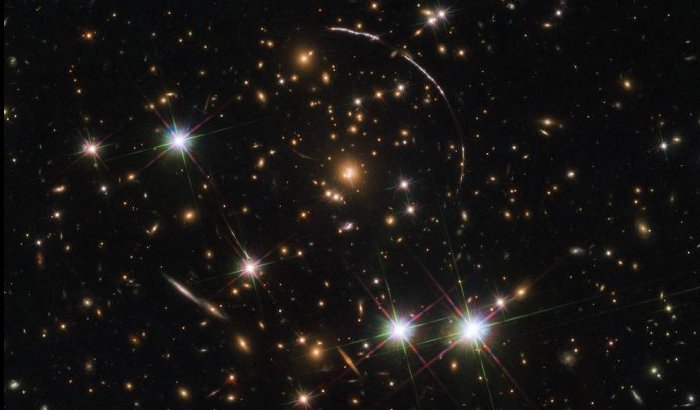 Hubble picture shows a galaxy nicknamed the Sunburst Arc that has been split into a kaleidoscope illusion of no fewer than 12 images formed by a massive foreground cluster of galaxies 4.6 billion light-years away. Credits: NASA, ESA and E. Rivera-Thorsen Institute of Theoretical Astrophysics Oslo, Norway
Hubble picture shows a galaxy nicknamed the Sunburst Arc that has been split into a kaleidoscope illusion of no fewer than 12 images formed by a massive foreground cluster of galaxies 4.6 billion light-years away. Credits: NASA, ESA and E. Rivera-Thorsen Institute of Theoretical Astrophysics Oslo, Norway
Gravitational lensing means that the foreground galaxy cluster is so massive that its gravity distorts the fabric of space-time, bending and magnifying the light from the more distant galaxy behind it. This “funhouse mirror” effect not only stretches the background galaxy image but also creates multiple images of the same galaxy.
The lensing phenomenon produces at least 12 images of the background galaxy, distributed over four major arcs. Three of these arcs are visible in the top right of the image, while one counter arc is visible in the lower-left — partially obscured by a bright foreground star within the Milky Way.
The galaxy, nicknamed the Sunburst Arc (officially designated PSZ1 G311.65-18.48), is almost 11 billion light-years from Earth and has been lensed into multiple images by a massive foreground cluster of galaxies 4.6 billion light-years away.
Hubble uses these cosmic magnifying glasses to study objects that would otherwise be too faint and too small for even its extraordinarily sensitive instruments. The Sunburst Arc is no exception, despite being one of the brightest gravitationally lensed galaxies known.
The lens makes images of the Sunburst Arc that are between 10 and 30 times brighter than the background galaxy would normally look. The magnification allows Hubble to view structures as small as 520 light-years across that would be too small to see without the turboboost from the lensing effect. The structures resemble star-forming regions in nearby galaxies in the local universe, allowing astronomers to make a detailed study of the remote galaxy and its environment.
Hubble’s observations show that the Sunburst Arc is similar to galaxies that existed at a much earlier time in the history of the universe, perhaps only 150 million years after the big bang.
Written by Eddie Gonzales Jr. – MessageToEagle.com Staff

